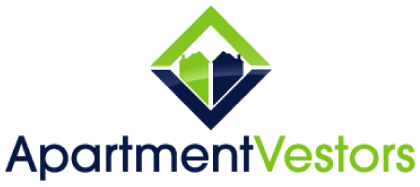If you would like to justify an increase in rents or increase the value of your multifamily property, one of the main ways this is done is through a process called "Repositioning." Most people are familiar with rehabbing a property, but repositionings can be much more than just a physical change to your property.
Three ways you can reposition your multifamily property:
- Cosmetic: Cosmetic changes consist of changing the aspects of the property to increase its appeal such as landscaping, restriping and resurfacing parking lots, painting, adding signage, or changing interior or exterior finishes. It is the easiest and least involved strategy and it can have a dramatic impact on how your tenants feel when they arrive at your property and decide how much they are willing to pay each month to live there.
- Structural: This option is usually more involved. When doing a structural repositioning it involves some of the following: changing mechanical systems, adding decks, changing the layout, or constructing new amenities such as pools or exercise rooms to capture additional revenue. This is typically much more involved and can have a dramatic impact on the property, but usually has the highest cost and is the most disruptive to your current tenant base.
- Operational: This option consists of changing the way the property operates. Typically it can include changing management companies or managers, removing troubling tenants, bringing in a different type of tenant with more disposable income, increasing occupancy, or adding additional revenue opportunities such as laundry rentals, carports, etc.
Why reposition? – Highest and Best Use
- Increase Income: A higher quality property attracts a tenant with more disposable income who may be willing to pay more to live there, allowing you to increase rents or realize additional income streams such as renting carports, or laundry machines, resulting in more cash flow.
- Control Expenses: By replacing old energy inefficient HVAC systems, or adding a utility bill-back program or individual utility meters, you can decrease your expenses as you pass more of them over to the tenant, increasing revenue and lowering expenses.
- Force Appreciation: By increasing income and controlling expenses you can force appreciation and increase the value of your property dramatically. Remember, just a $10 per month increase in income or decrease in expenses across 100 units can increase your income by $1000 a month and at a 10% Capitalization Rate (CAP Rate) increase the value of your property by over $120K.
- Ease of Management: When word gets out that a property is being improved and has great management, it attracts more reliable tenants that will, in return, take better care of their individual apartments. This will result in increased occupancy, increased rents, lower turnover costs, decreased rent delinquency, and fewer service requests. Not only does this save you money, it also makes the property easier to manage and more profitable to own.
Why isn’t everyone trying to repositioning properties?
You might ask yourself, if repositioning a property is so great, why isn’t everyone doing it? The simple answer is that not all properties will benefit equally from repositioning. You need to understand the market, know your competition, do your research to figure out if a repositioning is the right strategy for you, and have a plan.
Potential pitfalls to avoid:
- Over-improving the property: You need to have a good understanding of who your tenant is. If you are in C-Class area with mostly service employees and you have rehabbed your apartments to be fit for celebrity clientele, your tenants will love you, but you won’t be able to meet your rental income goals.
- Thinking you can always change the class of a property: If you have a 1960’s property in a C-Class neighborhood, almost no amount of upgrades is going to change it into a B-Class property.
- Making unrealistic assumptions on how much you can raise rents: You must understand what your competition is offering and have solid data backing up your rental rates. What are similar properties renting for? Return on investment needs to be a major driver.
- Underestimating the cost of the repositioning: Repositionings take time and money. A minor repositioning can range between $1,000 and $3,000 per unit. More extensive rehabs can cost upwards of $10,000 per unit. Make sure you have the money to finish the job properly once you get started. There is nothing worse than cutting corners because you ran out of money halfway through.
The recipe for repositioning success
Repositioning can be one of the fastest ways to increase rents on your property, lower expenses, and lower the management burdens, resulting in an increased net operating income and less management headaches. You can completely rehab the property, or just change some paint colors, or management. Whichever option you chose, you need to have a well thought out plan backed by research and realistic expectations. With a clear plan in place, repositionings can be the fastest way to increase your cash flow and add significant value to your property.

